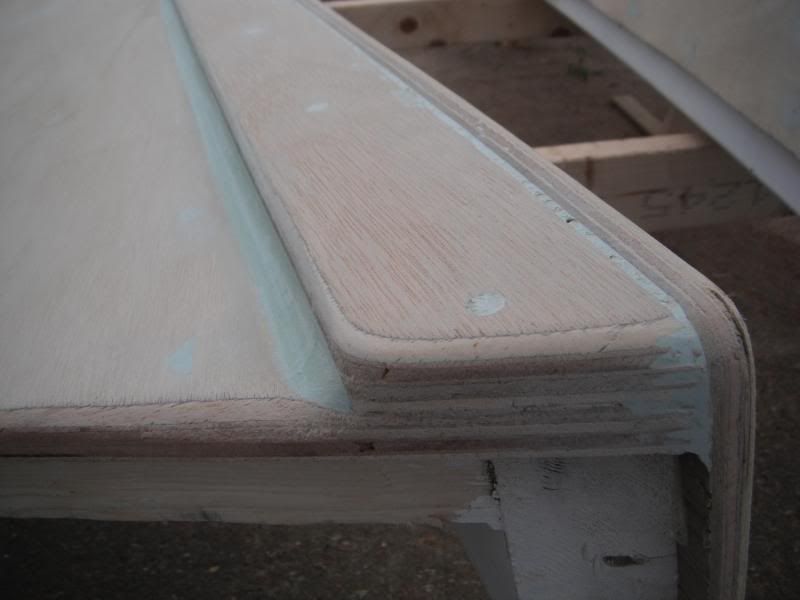Glues are important in boatbuilding, particularly "modern" boat building. Using plywood simplifies things and the boat is built quicker. Many people advocate epoxy as being the Best glue, that must be used for everything (the implication being that your boat will fall apart if you don't) That's bullshit in my opinion. "horses for courses" applies here. What's the point in using glues that are stronger than the woods parts? I think it's better to use glues that are of similar strength to the substrate, ie the wood or ply you use. For example, I use Gorilla glue, a polyurethane. The glue in the pot reacts to the tiny amount of humidity in the wood to start the chemical reaction. It's not as strong as epoxy of course. But when you use on large surfaces, like laminating two layers of ply, it's plenty strong enough. I remember having to separate two layers of veneers on a canoe once, where I had used gorilla glue. Darn things had to be chiselled off.And there is the convenience, the speed, and also the less waste that comes into the equation.
The other glue I used a lot is Sikaflex, the stuff in the tubes. Again, the convenience over the epoxy justifies it's use. I have used it on my boat to glue the ply to all the frames, along of course with a mechanical mean of holding things together screws and bronze ring nails. Even if the glues fails the screws and nails will hold things together quite nicely, just like they have done for a long time before epoxy, or any other modern miracle gloops.
I am going to use epoxy of course. The whole of the outside of the hull is going to be sheathed in glass and epoxy. That will protect the plywood much better than just paint. Mind you, this is not a completely fail safe method. Epoxy is not totally water impermeable. Also, the epoxy surface is generally much harder than the wood underneath it. So, if you knock your boat hard, it's quite likely your epoxy/glass protection is going to crack when the wood undeneath is compressed. Water will get in the cracks, particularly under the waterline and start it's job of rotting your wood... I think it's not of question of "if" but a question of "when". It will happen.
The other stuff I use at the moment is car body filler. It's a polyester putty used to fill dents and such on cars. Polyester does not stick as well as epoxy to wood, but for my purpose, it sticks well enough. I am using it to create fillets (see pictures) in all the corners of the hull that will be covered with glass cloth. The cloth does not like going around sharp corners. That would create voids where water could well get trapped. Those fillets are not structural, and don't need the superstrength of the epoxy. The other thing I did was to round all the corners, with a router because that was quick and efficient, if noisy and very dusty.
Another glue I will use, albeit in the interior, is Titebond PVA. That's also good stuff. I have read of people using it to bed canvas decks on fishing boats in America. To me, this is a better endorsement than what the manufacturers claim. That's good enough for me to use in the interior of the boat, when I get to it.
Did you know that epoxy can fail quite easily? Try applying a moderate amount of heat with a heat gun to a epoxy joint and see for yourself what happens! I have done it. The joint will fail. The other things that can make it fail, is if you paint your boat a dark colour. The heat build up can be enough for the epoxy to fail. Even varnish can be dark enough on a hot sunny day.



Thanks for this post. I'm feeling better about using Gorilla glue. Much easier ot work with in the small amounts needed at this stage. Saves me from messing with tiny batches of epoxy. When I do mix epoxy, I'll fillet the high stress joints then.
ReplyDelete